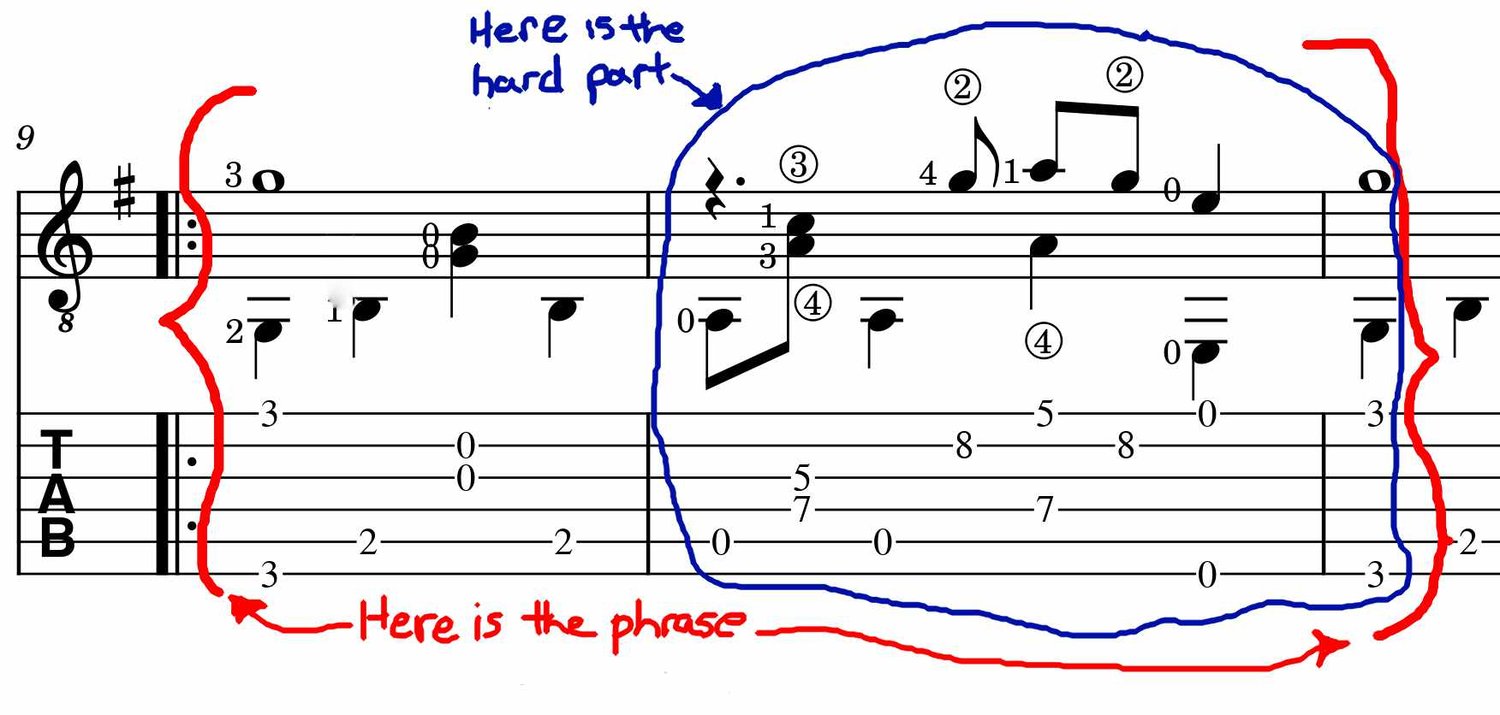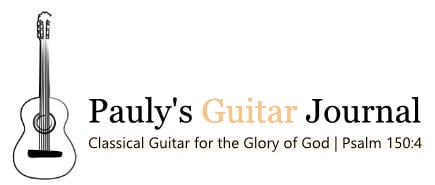An article that suggests an approach to working past the challenging parts in any piece of music on the classical guitar.
Have you ever?
Have you ever tried to learn a piece of music and found that most of it is easy enough to learn, but there is always that one spot (or two) that consistently gives you a headache that ibuprofen won’t cure? We’ve all been there. The pain in the hands, the frustration, the desire to give up and take up pottery classes instead. What if I told you there is a way to work through these rather ego-slaying sections with ease, beauty, and finesse? What if I told you it didn’t have to be this hard?
“Yeah, right!” you’d say, and to be honest, you’d be right.
Unfortunately, there are no magic bullets to accomplish these feats. However, there are approaches and concepts, which, if you work into your practice upfront, it’ll make life a little easier in the long run (well, at least the guitar practicing part of your life).

Hard Parts Practice Method
I think my practice approach is a little different than most. It takes a little longer to learn a piece of music. However, in the end, it’s learned and if I practice it once a week, it’s in my repertoire. At least, that has been my experience. It may not be a polished performance piece, but it’s still in my memory.
To learn a piece of music, I normally take a phrase and practice it as an exercise until I have it up to a metronome setting just above the top speed. So, for example, if the speed of the piece is 112, I aim to play the phrase cleanly at 122. I may start at 25% (yes, 25%) and work it up to full speed.
Let me explain. When you start a phrase, set the metronome at 25%. Play it five times perfectly in a row. If you mess up just once, you will have to start over at 1. This does wonders for your phrasing. It will also identify the hard parts of the phrase.
Isolate the Hard Parts
Once you have identified the part that’s giving you trouble, take a pencil, circle it (I put parenthesis around it), and include a beat in front of it and a beat behind it (don’t play too far or this will not work as well), and play only the circled section five times at the speed you’re practicing at.
So, for example, you have a phrase that you’re starting at 28 bpm. Halfway through the phrase, you run into a section that is difficult to play. You circle that section, including a beat before and a beat after. Then you play that section five times in a row perfectly. Then, and only then, do you go back and practice the whole phrase five times in a row perfectly, before moving on.

Isolate the hard parts in a phrase and practice them first
What Then?
Move the metronome up ten BMP. So, for our example: move the metronome up to 38. Practice the hard section 5 times in a row perfectly before practicing the whole phrase. After that, practice the whole phrase 5 times in a row perfectly. Once you can play it five times in a row perfectly, move up 10 beats on the metronome (for our example, move the metronome up to 48). Wash, rinse, and repeat until you can play it at full tempo.
Conclusion
I know that there could be people who take issue with some of my wording but don’t get hung up in the weeds. A phrase is basically a music sentence, usually consisting of four measures. Listen to the section you’re playing and you will be able to pick out where it ends. What I mean by perfectly is to play through the section cleanly with no mistakes. Take your time. You’ll get it.
If you like this blog post, you should sign up for the monthly newsletter and consider sharing it.




Comments ()